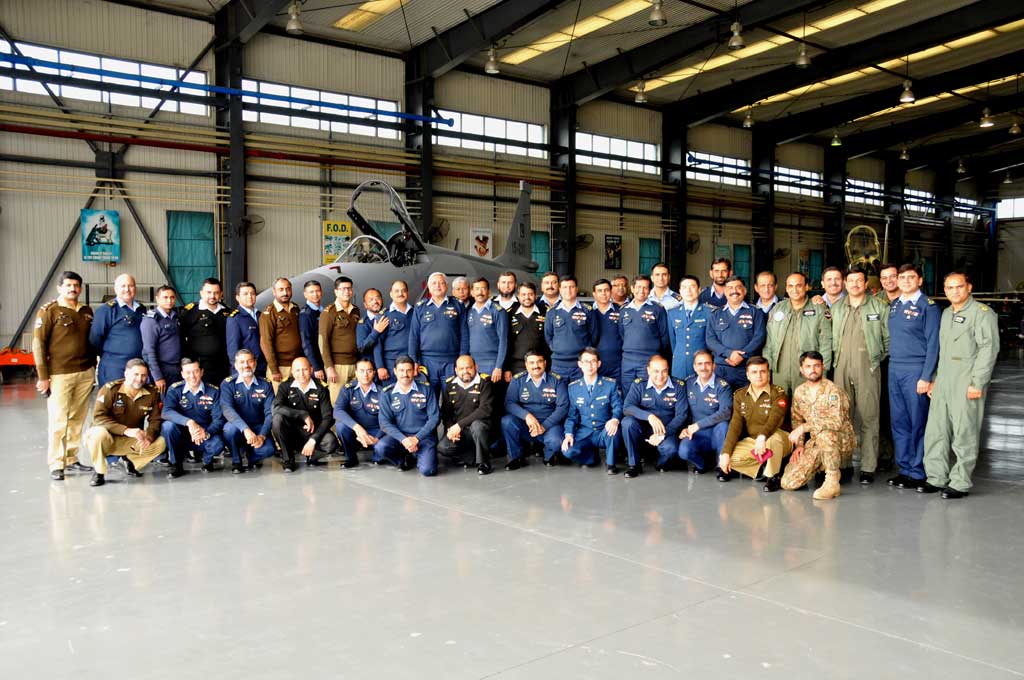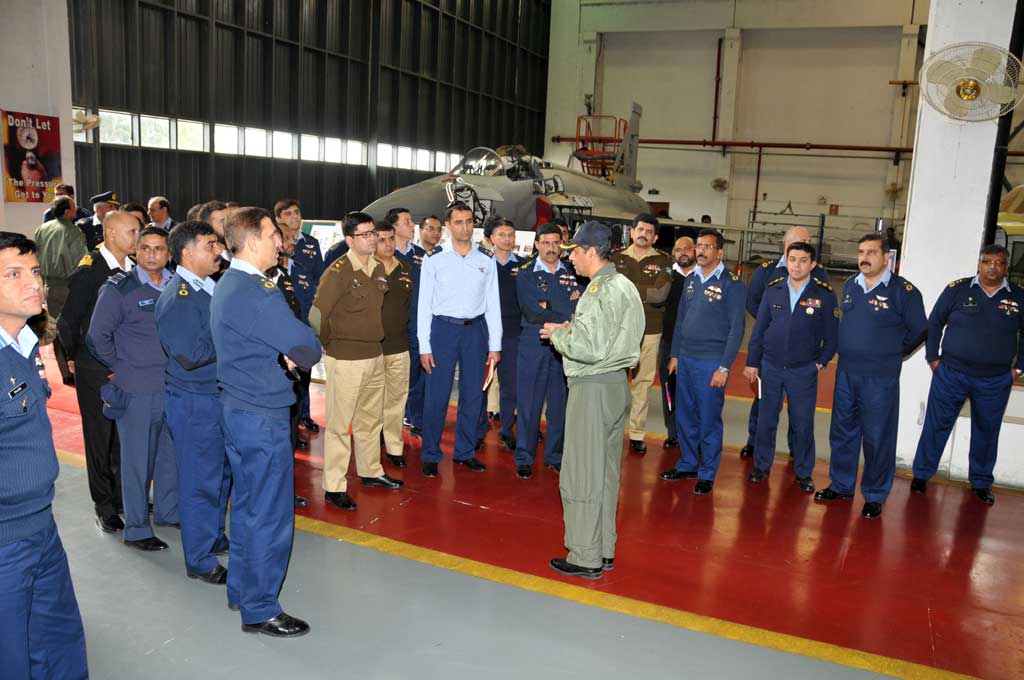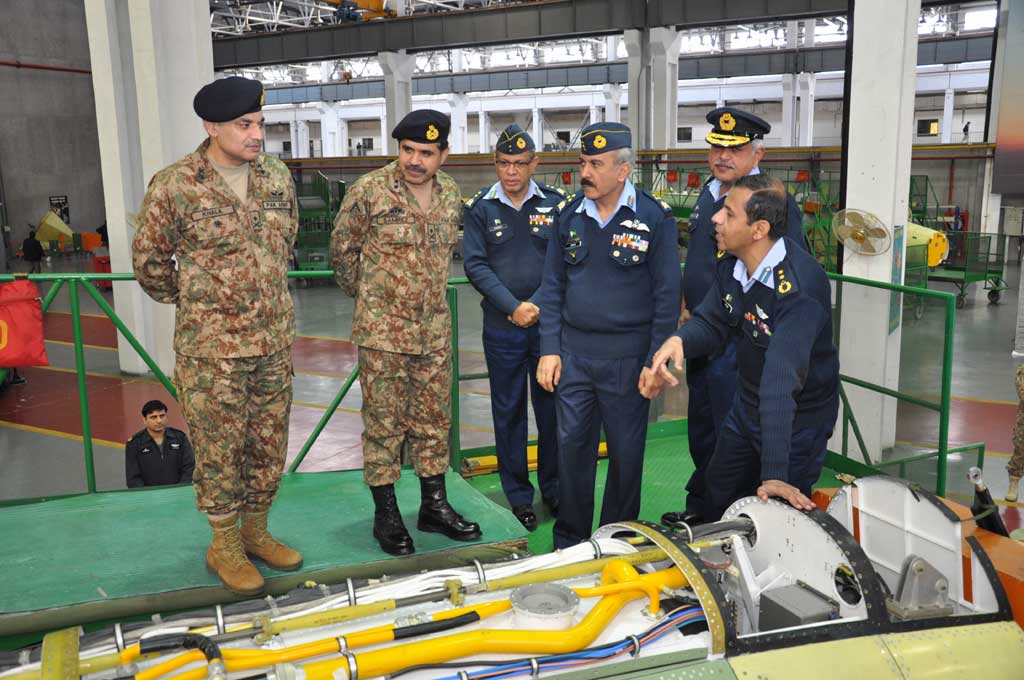To admit I have the feeling several of them - not sure, who's currently in front - are all circling around each other and waiting for the other one to be the first ... as such I hope indeed for the first Block II aircraft soon and then an export-success !
You are using an out of date browser. It may not display this or other websites correctly.
You should upgrade or use an alternative browser.
You should upgrade or use an alternative browser.
JF-17/FC-1 Fighter Aircraft thread
- Thread starter johnqh
- Start date
MastanKhan
Junior Member
Why this obsession about making exports ? The JF-17 Thunder has already served its main purposes. Which is to provide the PAF with an affordable replacement for its large fleet of Mirage III, Mirage 5, Chengdu J-7 and Nanchang Q-5's. And also to give Pakistan's aerospace industry a shot in the arm and push it to a new plateau. Export should be a extra that comes with it. But now at least on the internet it has become the main issue.
What happened to the JF-17 Thunder's max speed it use to be mach 1,8 but now that has changed to mach 1,6. I mean is that all the JF-17 can do mach 1,6 ? I thought it can do mach 1,8 with the DSI.
Hi,
Thank you for the post---. I have taken the liberty of using your comments on another forum.
Block 2 JF-17 makes first flight ahead of Block 3 improvements
Publication:Jane's Defence Weekly
Last posted: 2015-03-17
The first Block 2 JF-17 Thunder combat aircraft made its maiden flight from the Pakistan Aeronautical Company (PAC) facility at Kamra on 9 February.
The aircraft (serial number 2P01) made three more successful flights before being taken to the paint shop in mid-February. The test flights came as a boost as PAC continues to look for a first export customer for its platform.
Air Commodore Ahsan Rafiq, Deputy Chief Project Director (Operations) JF-17 and a former commanding officer of the JF-17 Test and Evaluation Unit, described the Block 2 version as "an upgraded Block 1 with an air-to-air refuelling (AAR) probe, enhanced oxygen system [to allow the pilot to stay in the air longer], and improved electronic countermeasures system (ECS)".
The Pakistan Air Force (PAF) has a contract for 50 Block 2 JF-17s but as Air Cdre Ahsan pointed out, "the full AAR system will not appear until the 29th jet, which should fly later this year [at Chengdu Aircraft Corporation (CAC) in China]."
In a further development that sends a clear signal that PAC and Chinese marketing partner CATIC intend business in the international arena, the Block 2 JF-17 will also have a two-seater version, which is now being developed at Chengdu according to the PAF's requirements.
"We know potential customers would like to see a two-seater, although it is not such a big deal for the PAF, which started flying several types, [A-5, F-6, F-7P and F-7PG] without a training version," Air Cdre Ahsan said. "This will give us the chance to show potential suitors how the jet can perform in the air."
COMMENT
Air Cdre Ahsan said that while Block 1 and 2 JF-17s will not differ significantly - with Block 1 JF-17's ECS likely to be upgraded when it suits the PAF, it will be a different story with the Block 3 series.
"We are still developing the Block 3 configuration, but it will be a considerably different aircraft compared to the previous two blocks," he said. "A new AESA [active electronically scanned array] radar will be integrated, but this is still in the design stage; however, we are looking at both Western and Eastern options."
Integrating an AESA with the SD-10A beyond-visual-range missile will provide the PAF and any other JF-17 operator with a long-range, all-aspect precision day and night engagement capability.
As the JF-17 continues to evolve, aircraft units will start coming off the PAC Kamra production line more quickly. The facility is also set to reach the 58% transfer of technology agreed with China, which had been previously slowed down to keep it in line with the plant's infrastructure and equipment growth.

This Block 2 JF-17, with its KLJ-7 airborne pulse doppler fire-control radar visible, was one of the few units on the production line at PAC Kamra on 19 February. The Block 3 version, now being developed, will accommodate a new AESA radar. (Alan Warnes)

The second Block 2 JF-17 sits in the flight test station at PAC Kamra, awaiting its first flight. (Alan Warnes)
A 48 Member Delegation from PAF Air War College Visits PAC Kamra
15-201



Publication:Jane's Defence Weekly
Last posted: 2015-03-17
The first Block 2 JF-17 Thunder combat aircraft made its maiden flight from the Pakistan Aeronautical Company (PAC) facility at Kamra on 9 February.
The aircraft (serial number 2P01) made three more successful flights before being taken to the paint shop in mid-February. The test flights came as a boost as PAC continues to look for a first export customer for its platform.
Air Commodore Ahsan Rafiq, Deputy Chief Project Director (Operations) JF-17 and a former commanding officer of the JF-17 Test and Evaluation Unit, described the Block 2 version as "an upgraded Block 1 with an air-to-air refuelling (AAR) probe, enhanced oxygen system [to allow the pilot to stay in the air longer], and improved electronic countermeasures system (ECS)".
The Pakistan Air Force (PAF) has a contract for 50 Block 2 JF-17s but as Air Cdre Ahsan pointed out, "the full AAR system will not appear until the 29th jet, which should fly later this year [at Chengdu Aircraft Corporation (CAC) in China]."
In a further development that sends a clear signal that PAC and Chinese marketing partner CATIC intend business in the international arena, the Block 2 JF-17 will also have a two-seater version, which is now being developed at Chengdu according to the PAF's requirements.
"We know potential customers would like to see a two-seater, although it is not such a big deal for the PAF, which started flying several types, [A-5, F-6, F-7P and F-7PG] without a training version," Air Cdre Ahsan said. "This will give us the chance to show potential suitors how the jet can perform in the air."
COMMENT
Air Cdre Ahsan said that while Block 1 and 2 JF-17s will not differ significantly - with Block 1 JF-17's ECS likely to be upgraded when it suits the PAF, it will be a different story with the Block 3 series.
"We are still developing the Block 3 configuration, but it will be a considerably different aircraft compared to the previous two blocks," he said. "A new AESA [active electronically scanned array] radar will be integrated, but this is still in the design stage; however, we are looking at both Western and Eastern options."
Integrating an AESA with the SD-10A beyond-visual-range missile will provide the PAF and any other JF-17 operator with a long-range, all-aspect precision day and night engagement capability.
As the JF-17 continues to evolve, aircraft units will start coming off the PAC Kamra production line more quickly. The facility is also set to reach the 58% transfer of technology agreed with China, which had been previously slowed down to keep it in line with the plant's infrastructure and equipment growth.

This Block 2 JF-17, with its KLJ-7 airborne pulse doppler fire-control radar visible, was one of the few units on the production line at PAC Kamra on 19 February. The Block 3 version, now being developed, will accommodate a new AESA radar. (Alan Warnes)

The second Block 2 JF-17 sits in the flight test station at PAC Kamra, awaiting its first flight. (Alan Warnes)
A 48 Member Delegation from PAF Air War College Visits PAC Kamra
15-201



Argentina Shopping for Chinese Fighter Jets
Defense Splurge Set to Include Falklands-Capable Aircraft
MARCH 17, 2015 AT 12:07 PM
Argentina is seeking to purchase 24 advanced fighter aircraft from China, Defense Minister Agustín Rossi told press Tuesday. The jets, it was soon reported, would be capable of reaching the Falkland Islands, a South Atlantic archipelago owned by the United Kingdom but claimed by Argentina as the Islas Malvinas.
Within the next week, “the chief of staff of the Argentinean Air Force is traveling to China along with a technical delegation to analyze the possibilities” of purchasing up to 24 FC-1/JF-17 fighter jets, said Rossi.
“The single-seat, single-engine fighter has a top speed of Mach 1.8 at altitude of 55,000 ft and combat range of 840 miles, allowing it to comfortably fly to Port Stanley and back from the Tierra del Fuego air base in southern Argentina,”British journalist Marco Giannangeli on February 15 after initial high-level talks between Buenos Aires and Beijing.
Rossi confirmed that the government is seeking to buy “no lees than 12 and no more than 24″ fighters.
“This is a new thing for the Argentinean Air Force, which has always had Western equipment,” he said. However, Rossi also mentioned that there are “two formal offers” to buy Spanish-made F1 jets, and the Kfir Block 60 from Israel. “Informally, we also have a French offer,” he added.
Rossi estimated that the purchase process will be finished before the end of the year. He said that when he receives all the formal offers he “will take the different alternatives to the president so she can make the decision,” he said.
On Monday, President Cristina Kirchner, along with Rossi and Army Chief César Milani, that the Argentinean army is to receive additional funding of AR$930 million (about US$71 million). “[This is] the largest investment ever made in a long time” to equip the force, she said.
The investment the purchase of 120,000 new uniforms bought in China, 35 Hummers, and 30 trucks to transport troops and equipment, among others.
The announcement comes in the same week as a prosecutor in the province of Córdoba a judge to bring a case against Milani, who is currently under investigation for human-rights violations during the 1976-1983 military dictatorship.
Defense Splurge Set to Include Falklands-Capable Aircraft
MARCH 17, 2015 AT 12:07 PM
Argentina is seeking to purchase 24 advanced fighter aircraft from China, Defense Minister Agustín Rossi told press Tuesday. The jets, it was soon reported, would be capable of reaching the Falkland Islands, a South Atlantic archipelago owned by the United Kingdom but claimed by Argentina as the Islas Malvinas.
Within the next week, “the chief of staff of the Argentinean Air Force is traveling to China along with a technical delegation to analyze the possibilities” of purchasing up to 24 FC-1/JF-17 fighter jets, said Rossi.
“The single-seat, single-engine fighter has a top speed of Mach 1.8 at altitude of 55,000 ft and combat range of 840 miles, allowing it to comfortably fly to Port Stanley and back from the Tierra del Fuego air base in southern Argentina,”British journalist Marco Giannangeli on February 15 after initial high-level talks between Buenos Aires and Beijing.
Rossi confirmed that the government is seeking to buy “no lees than 12 and no more than 24″ fighters.
“This is a new thing for the Argentinean Air Force, which has always had Western equipment,” he said. However, Rossi also mentioned that there are “two formal offers” to buy Spanish-made F1 jets, and the Kfir Block 60 from Israel. “Informally, we also have a French offer,” he added.
Rossi estimated that the purchase process will be finished before the end of the year. He said that when he receives all the formal offers he “will take the different alternatives to the president so she can make the decision,” he said.
On Monday, President Cristina Kirchner, along with Rossi and Army Chief César Milani, that the Argentinean army is to receive additional funding of AR$930 million (about US$71 million). “[This is] the largest investment ever made in a long time” to equip the force, she said.
The investment the purchase of 120,000 new uniforms bought in China, 35 Hummers, and 30 trucks to transport troops and equipment, among others.
The announcement comes in the same week as a prosecutor in the province of Córdoba a judge to bring a case against Milani, who is currently under investigation for human-rights violations during the 1976-1983 military dictatorship.
thunderchief
Senior Member
Rossi confirmed that the government is seeking to buy “no lees than 12 and no more than 24″ fighters.
I guess they want to spend as little as possible to keep FAA flying , and they don't want to agitate British too much . Also, I doubt there will be technology transfer for such relatively small order, but we shall see.
asif iqbal
Banned Idiot
Wow wow and wow !!!
Great news for PAF and another milestone achieved in this programme !'
Congrats to Sino-Pak collaboration



Great news for PAF and another milestone achieved in this programme !'
Congrats to Sino-Pak collaboration
SinoSoldier
Colonel
Block 2 JF-17 makes first flight ahead of Block 3 improvements
Publication:Jane's Defence Weekly
Last posted: 2015-03-17
The first Block 2 JF-17 Thunder combat aircraft made its maiden flight from the Pakistan Aeronautical Company (PAC) facility at Kamra on 9 February.
The aircraft (serial number 2P01) made three more successful flights before being taken to the paint shop in mid-February. The test flights came as a boost as PAC continues to look for a first export customer for its platform.
Air Commodore Ahsan Rafiq, Deputy Chief Project Director (Operations) JF-17 and a former commanding officer of the JF-17 Test and Evaluation Unit, described the Block 2 version as "an upgraded Block 1 with an air-to-air refuelling (AAR) probe, enhanced oxygen system [to allow the pilot to stay in the air longer], and improved electronic countermeasures system (ECS)".
The Pakistan Air Force (PAF) has a contract for 50 Block 2 JF-17s but as Air Cdre Ahsan pointed out, "the full AAR system will not appear until the 29th jet, which should fly later this year [at Chengdu Aircraft Corporation (CAC) in China]."
In a further development that sends a clear signal that PAC and Chinese marketing partner CATIC intend business in the international arena, the Block 2 JF-17 will also have a two-seater version, which is now being developed at Chengdu according to the PAF's requirements.
"We know potential customers would like to see a two-seater, although it is not such a big deal for the PAF, which started flying several types, [A-5, F-6, F-7P and F-7PG] without a training version," Air Cdre Ahsan said. "This will give us the chance to show potential suitors how the jet can perform in the air."
COMMENT
Air Cdre Ahsan said that while Block 1 and 2 JF-17s will not differ significantly - with Block 1 JF-17's ECS likely to be upgraded when it suits the PAF, it will be a different story with the Block 3 series.
"We are still developing the Block 3 configuration, but it will be a considerably different aircraft compared to the previous two blocks," he said. "A new AESA [active electronically scanned array] radar will be integrated, but this is still in the design stage; however, we are looking at both Western and Eastern options."
Integrating an AESA with the SD-10A beyond-visual-range missile will provide the PAF and any other JF-17 operator with a long-range, all-aspect precision day and night engagement capability.
As the JF-17 continues to evolve, aircraft units will start coming off the PAC Kamra production line more quickly. The facility is also set to reach the 58% transfer of technology agreed with China, which had been previously slowed down to keep it in line with the plant's infrastructure and equipment growth.

This Block 2 JF-17, with its KLJ-7 airborne pulse doppler fire-control radar visible, was one of the few units on the production line at PAC Kamra on 19 February. The Block 3 version, now being developed, will accommodate a new AESA radar. (Alan Warnes)

The second Block 2 JF-17 sits in the flight test station at PAC Kamra, awaiting its first flight. (Alan Warnes)
A 48 Member Delegation from PAF Air War College Visits PAC Kamra
15-201



Now, are the Block 2 and Block 3 solely developed at PAC or is Chengdu also involved and can build these jets as well?
asif iqbal
Banned Idiot
Looks like PAC is gearing up for a good production run this year in 2010 they built 16 x JF-17 Block I units I hope they break the record this time and judging by photos lots going on
So far 3 x JF-17 Block II identified and in one of the pictures we can see fuselage of another I am sure there is a good number under build
2P01 is now 15-201 and painted

2P02 looks like they are doing diagnostic checks for pre flight

2P03 looks to be in assembly stage

And more units in background

A good year for JF-17 programme
Once they have allocated funding and resources for next 50 x Block II it's go go go !!!
So far 3 x JF-17 Block II identified and in one of the pictures we can see fuselage of another I am sure there is a good number under build
2P01 is now 15-201 and painted

2P02 looks like they are doing diagnostic checks for pre flight

2P03 looks to be in assembly stage

And more units in background

A good year for JF-17 programme
Once they have allocated funding and resources for next 50 x Block II it's go go go !!!


